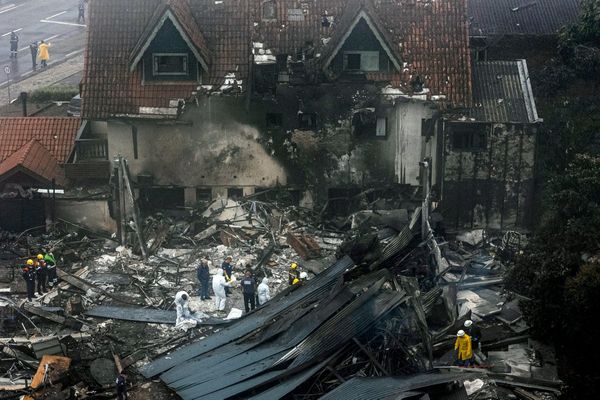
Setting aside the numerous other criticisms of Peter Dutton’s one-page, uncosted nuclear plan, it’s worth pointing out that it completely relies on a crucial, non-renewable resource: time.
The Coalition’s plan is to get one nuclear power plant up and running by 2035, with more to come soon after. Experts say this timeline is implausible. But even if we take the word of a politician promising to deliver an enormous and technically challenging project far in the future over the expertise of subject matter authorities, 2035 is still more than a decade away.
Funnily enough, the Intergovernmental Panel on Climate Change (IPCC) says that same decade is also crucial when it comes to mitigating climate catastrophe.
In a political sense, nuclear’s long runway is a strength. If returned to power, the Coalition will have several future election campaigns in which it can point towards nuclear as the solution to Australia’s energy problem before its homework is due. Any debate about emissions can be waved away by vaguely pointing at a date in the future (?) when nuclear comes online to provide cheap energy (??) that can be immediately dispatched (???) whenever Australia suffers a days, weeks or months-long sun and wind drought that renders our existing renewables network useless (????).
The year 2035 will be here before you know it, so sit back and let the boffins at Australia’s Nuclear Science and Technology Organisation figure it out!
But what happens to the climate over the intervening 10 years, even presuming this project is delivered on time?
The fact that we need to do something to get our carbon emissions down pronto is not controversial. Remember there had been bipartisan support for climate action since 2015… until earlier this month, when Peter Dutton signalled his plans to breach the Paris Agreement. Nine years is forever in politics — unless you’re building a nuclear reactor, in which case it’s really no time at all.
At the current rate, global temperatures are expected to hit 1.5 degrees above pre-industrial levels by 2035. (We actually hit this mark over the past year, but this measure is supposed to be a multi-year average so we’ll just have to wait and see if this trend continues).
Here are some of the things that will happen when — not if — we hit 1.5 degrees according to the IPCC and other sources.
- More extreme heat, droughts, storms and other weather events.
- Resulting challenges to food production systems and access to water.
- Health threats directly related to extreme temperatures, like heat illness, and those caused by its impacts, including increases in mosquito-borne diseases.
- Sea level rises of between 0.29m and 1.1m and one metre by the year 2100 due to the irreversible melting of ice sheets.
- The death of 70-90% of coral reefs and risks to marine ecosystems.
- Rare but expected ice-free summers.
- Global gross domestic product losses of around 15%.
- A labour productivity loss equivalent to 72 million full-time jobs due to work lost from heat stress.
- Growing poverty and disadvantage from climate displacement and the impact on agriculture-dependent communities.
Keep in mind, this is the best case scenario. This grim future is what happens if we limit emissions in line with our Paris targets to keep us to 1.5 degrees, not accounting for countries like Australia deciding, well, they just don’t want to anymore. It’s assuming we don’t do things like cap renewable investment to actively kneecap the transition that’s already happening.
Timing, as they say, is everything. And maybe nuclear can be part of an energy transition — after all, other countries around the world are using it right now or already have projects underway. But given how late Dutton’s new “energy debate” has been launched, is it really meant to provoke a discussion about how to avert an imminent climate crisis? Or is it about kicking the can down the road, again?
Are you buying the politics of Dutton’s nuclear plan? Let us know your thoughts by writing to letters@crikey.com.au. Please include your full name to be considered for publication. We reserve the right to edit for length and clarity.







